The week at a glance
- White-crowned Sparrow still in Norfolk
- Pacific Diver still in Pembrokeshire
- Wilson's Snipe again on Scilly
- American Buff-bellied Pipit still in County Cork
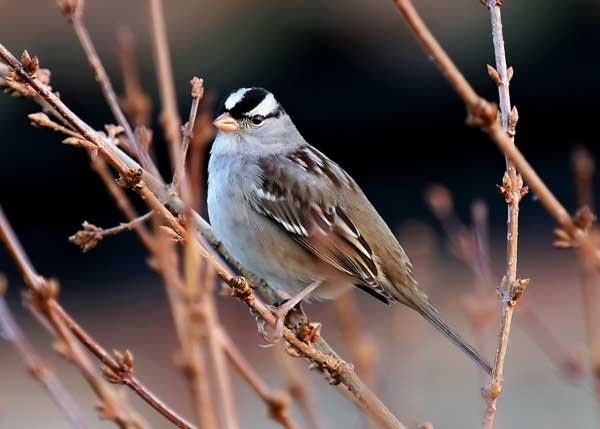
White-crowned Sparrow, Cley next the Sea, Norfolk (Photo:
Darren Chapman)
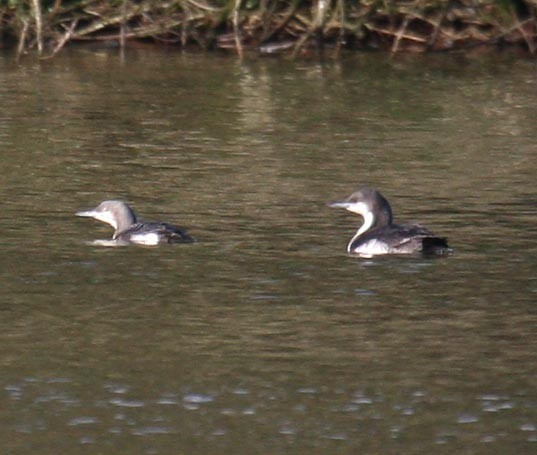
Pacific Diver, right, Llys-y-Fran Reservoir, Pembrokeshire (Photo:
Lee Johnson)
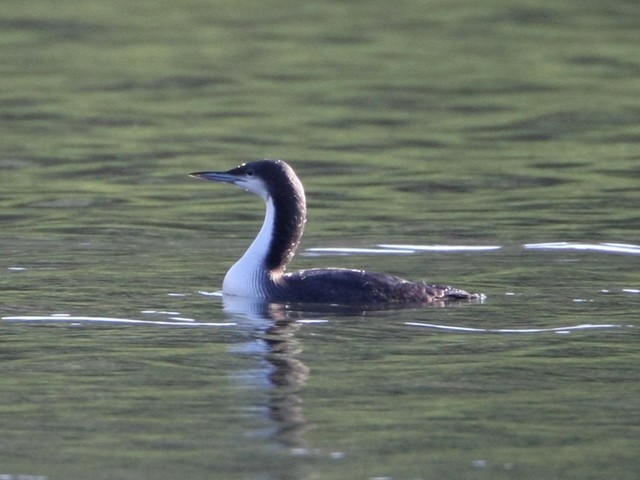
Pacific Diver, Llys-y-Fran Reservoir, Pembrokeshire (Photo:
Richard Crossen)
Perhaps it wasn't much of a surprise that, as January began to draw to a close, this week was again rather a quiet one as far as the appearance of brand spanking new mega-rarities. That said, there was still a quartet of top notch birds still very much at the forefront of the news headlines. Still leading the way was the handsome adult White-crowned Sparrow at Cley (Norfolk). Now firmly habituated alongside the local House Sparrows, the bird has become increasingly more showy and approachable and was still pleasing all comers to 30th. The incredible amount of money now collected over the course of the bird's near-month-long residence so far is just shy of £4000. The second-winter Pacific Diver was still to be found, often showing well, at Llys-y-Fran Reservoir (Pembrokeshire) from 24th-30th. Bearing in mind that this bird's identification was often fiercely debated last winter, it must be pleasing for the local birders who called it right in 2007 to see the return of such a text-book individual in 2008. Often the Pacific Diver was to be seen side-by-side with a Black-throated Diver, presenting a fascinating chance to study the species pair. On the Isles of Scilly, on Lower Moors, St. Mary's, a Wilson's Snipe was again noted on 24th-25th, and again on 29th, while in County Cork, the wintering American Buff-bellied Pipit was still to be seen near Youghal on 23rd.

White-billed Diver, Bluemull Sound, Shetland (Photo:
Brydon Thomason)
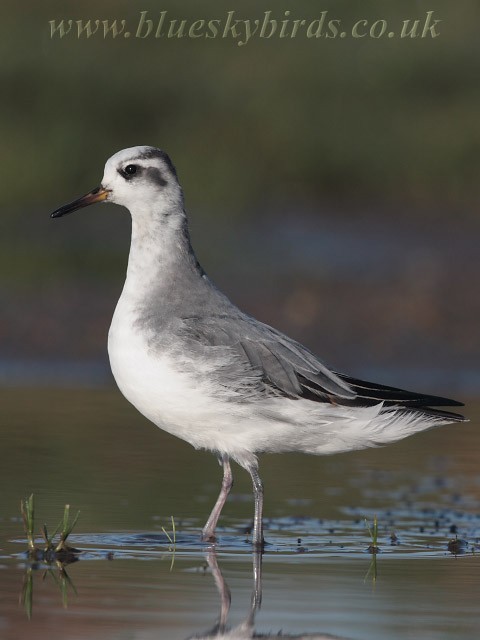
Grey Phalarope, Waxham, Norfolk (Photo:
Peter Simpson)
The White-billed Diver was still to be seen off Kirkabister (Shetland) on 24th-29th (with a Little Auk there on 27th), and a second bird was seen in Bluemill Sound, between Unst and Fetlar, on 30th. Several Balearic Shearwaters continued to be seen through the English Channel this week, mainly from the coast of Dorset. At least ten birds were seen off Portland Bill on 24th, with a dozen there on 25th and ten on 26th. Other birds in Dorset were reported from Studland, Peveril Point and Durlston CP. Elsewhere, birds were seen in Cornwall, Devon and, much further to the northeast, from Bamburgh (Northumberland) on 26th. Only six Pomarine Skuas were reported this week, from the Kent and Essex coasts, while Arctic Skuas were seen in Essex and Hampshire. A Grey Phalarope appeared on a small puddle at Waxham (Norfolk) on 25th and was still present and showing well, on 28th. Two Little Auks flew past Whitburn (Co. Durham) on 27th, with one off Grutness (Shetland) on 28th.

Cattle Egret, Saltfleet, Lincolnshire (Photo:
Russell Hayes)
For the first time in this winter's historic invasion of Cattle Egrets, the record for the largest single flock finally left the high teens, when 20 were seen near Treganhoe Farm, Sancreed (Cornwall) on 25th and 28th. Elsewhere in Cornwall, nine were seen at Helston on 24th, up to four remained at Crantock to at least 27th and singles were near Pendeen on 27th and at Dinham Flats on 29th. In Devon, four birds remained near Bideford to at least 26th, while one arrived at Exminster Marshes RSPB on 24th, with two there from 25th onwards. Also along the Exe Estuary, one was still near Powderham on 27th, with two present on 29th. Alongside the Kingsbridge Estuary two birds appeared on 27th, quickly rising to five on 29th. Three singles remained in Somerset through the week; near Muchelney and also Old Cleeve, both to 24th and at Stoke St. Michael to 30th. The only birds reported in Dorset this week were two at Radipole Lake RSPB on 27th, while in Hampshire, the bird at Harbridge remained to at least 29th. At Chichester GP (West Sussex) the duo that arrived last week were still in place to 27th (with one to 30th) while in neighbouring East Sussex three birds were at Coombe Haven on 24th and a single was seen near Hartfield on 29th, then at Piddinghoe on 30th. In Gloucestershire, the bird at Fretherne was still to be seen until at least 29th. Further to the north, a bird appeared at Burton Marsh on 25th and was last seen flying off inland late morning the following day. Two new birds were seen on 30th, at Rimac (Lincolnshire) and at Hellifield Flash (North Yorkshire). Five counties in Ireland were still on the Cattle Egret map this week. The largest group was in Waterford, where ten were seen at Drumlohan on 27th. The bird at Oilgate (Co. Wexford) remained to 28th, while two remained in County Kerry, near Ardfert to at least 26th. In Galway, three birds remained at Cartron near Corrandulla to 26th, with one still present to 27th. At least five birds were around the Clonakilty area (Co. Cork) to 26th.

Spoonbill, Ernesettle, Devon (Photo:
Phil Stidwill)

Common Crane, Elgin, Moray & Nairn (Photo:
Sandy Morrison)
Up to seven Great White Egrets were reported through the week, with four of them being birds noted throughout much of the month. The bird around Thorpeness and North Warren RSPB (Suffolk) was seen from 24th-30th and the bird at Pymore (Cambridgeshire) was present (on and off) from 24th-29th. In Hampshire one was again at Blashford Lakes HWT on 25th, and then at Fordingbridge on 27th. On the Outer Hebrides, one was noted on Benbecula on 26th and 29th. The only new reports this week were birds seen at Burton Marsh (Cheshire) on 27th, at Stiffkey (Norfolk) on 28th, and at Cotswold Water Park (Wiltshire) on 30th. Up to 21 Spoonbills were seen over the course of the week, with a group of 11 at Arne RSPB (Dorset) on 26th, with seven still at Isley Marsh RSPB (Devon) on 27th-29th. A juvenile remained on Green Island, Samson (Scilly) on from 26th-28th with others noted in Devon and Dorset. The second-winter Glossy Ibis remained at Warton Marsh (Lancashire) from 26th-29th. The flock of 11 Common Cranes remained in Moray from 24th-30th, with last week's three birds at Hastigrow (Highland) still present to 28th and, still in Highland, two birds were at Bowermadden from 25th-27th. Singles were seen near the Ouse Washes RSPB (Cambridgeshire) and Little Linford Wood (Buckinghamshire) on 27th, while the flock in Norfolk mustered a maximum of 18 at Waxham on 29th.
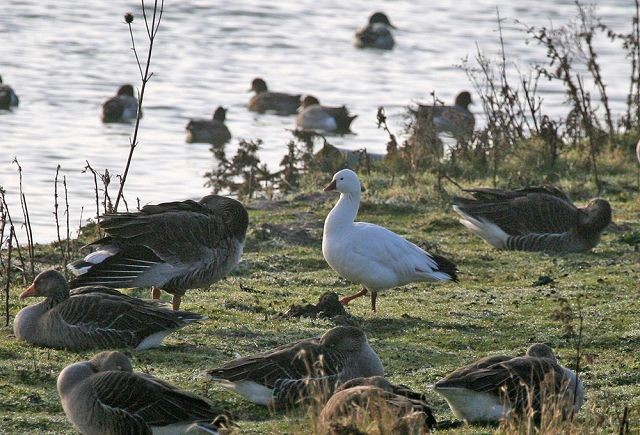
Ross's Goose, Snettisham RSPB, Norfolk (Photo:
Peter Birtchnell)

Ring-necked Duck, Stithians Reservoir, Cornwall (Photo:
Brian Mcgeough)
Three or four Ross's Geese were still at large in Norfolk throughout the week. Single adults were seen near Docking and Saxlingham on 24th with two birds at Holkham Freshmarsh on 26th, before both birds then relocated to Saxlingham later on the same day, and continued to visit the beet fields there until 30th. In east Norfolk, a Ross's Goose was seen near Acle on 26th, alongside two white-morph Lesser Snow Geese. One of these birds was also reported at Holkham Freshmarsh on 24th and 26th. Elsewhere, a white Snow Goose was still in Argyll, at Craobh Haven, on 26th and a blue adult was near Mintlaw (Aberdeenshire) on 27th. The adult Red-breasted Goose was still at West Wittering (West Sussex) and surrounding areas until 30th. Up to 13 Black Brants were found this week, with five in Norfolk (including two at Morston on 25th), two in Suffolk and singles still in West Sussex (at West Wittering), in Hampshire (at Gosport), Dorset (on The Fleet) and in Devon (still on the Kingsbridge Estuary). In Ireland, Black Brants were at North Slobs WWT (Co. Wexford) on 26th and at Dungarvan (Co. Waterford) on 27th. One or two "Richardson's" Canada Geese remained around County Sligo to 28th at least. In Cheshire, a Lesser White-fronted Goose was reported flying northwest over Moore NR, amongst a group of 30 White-fronted Geese, on 26th. The drake American Wigeon was again at Angle Bay (Pembrokeshire) on 26th-29th, with the first-winter drake again at Maywick (Shetland) to 30th. Two hybrid American Wigeon x Eurasian Wigeon were seen: at College Reservoir (Cornwall) on 26th and at Rainham Marshes RSPB (London) on 27th. Five drake Green-winged Teal this week included the long-staying bird at Belfast Lough RSPB on 25th. Also in Ireland, one was at Kilcoole (Co. Wicklow) on 27th. Two birds were seen in Scotland: at Caerlaverock WWT (Dumfries & Galloway) on 25th and at Loch of Strathbeg (Aberdeenshire) on the same date. In Lancashire, one was at Stocks Reservoir from 27th-30th. It was very much a case of "as you were" with the week's Lesser Scaup - last week's four became this week's four. First-winter drakes remained at Appleford GPs (Oxfordshire) until 29th and Draycote Water (Warwickshire) until 30th, with the adult drake remaining on Coot Loch, Benbecula (Outer Hebrides) to 29th at least. Last week's new arrival at Lough Arrow (Co. Sligo) was still present from 24th-27th and was in the company of three Ring-necked Ducks, two drakes and a duck. Elsewhere in Ireland, Ring-necked Ducks remained at Mell Quarry (Co. Louth) to 26th and at Racecourse Lough (Co. Fermanagh) also to 26th. Adult drakes remained in Somerset and Buckinghamshire, with two drakes together at Loch Calder (Highland) on 29th. Females continued to be seen in Cumbria, Cornwall and Highland. A drake Ferruginous Duck was found at Shipley Lake (Derbyshire) on 27th, and was still present to 30th. The adult male King Eider remained in Mousa Sound (Shetland) to 30th and the first-winter male was again off Girdle Ness (Aberdeenshire) on 24th and 28th-30th. Surf Scoter numbers were rather stagnant this week - first-winter females remained off Silver Strand (Co. Galway) to 29th, off Hough Bay, Tiree (Argyll) to 27th and Dawlish Warren/Exmouth (Devon) to 30th. A drake was at Lower Largo (Fife) on 27th.
Seven Rough-legged Buzzards were reported, with at least two still on the Isle of Sheppey (Kent) throughout the week. On 26th, singles were at Grainthorpe (Lincolnshire) and Kildale (North Yorkshire), while on 27th, two more singles were noted; in Cleveland, at Sleddale, and in Norfolk, at Burnham Norton, the former still present to 30th, the latter to early on 28th. On Orkney, the long-staying juvenile Rough-legged Buzzard was again at Rendall on 30th. In Norfolk, Dark-breasted Barn Owls were reported from Scarning on 25th and near Acle on 26th-27th.
Just one Spotted Sandpiper to report this week, the bird at Lisvane Reservoir (Glamorgan) remaining until 29th at least (and was beginning to show a handful of spots). The first-winter Long-billed Dowitcher was at Bowling Green Marsh RSPB (Devon) on 25th-29th. Lesser Yellowlegs, like Spotted Sandpiper before it, dropped from two to one with the bird at Montrose Basin (Angus) the only one reported, present on 26th-27th. The adult Temminck's Stint was again at Slimbridge WWT (Gloucestershire) on 25th and 30th, while the Kentish Plover on South Uist (Outer Hebrides) was still present on 29th.
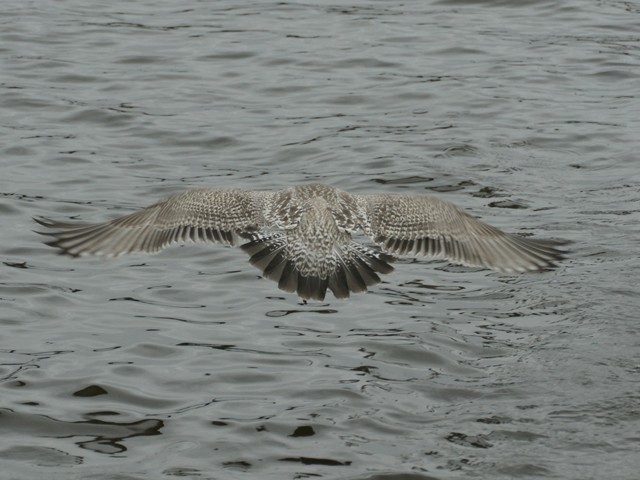
American Herring Gull, Nimmo's Pier, Galway (Photo:
Tom Cuffe)
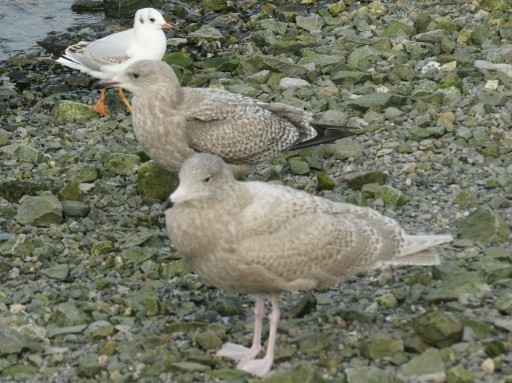
1st-winter American Herring Gull (centre) and 1st-winter Glaucous Gull (front), Nimmo's Pier, Galway (Photo:
Tom Cuffe)
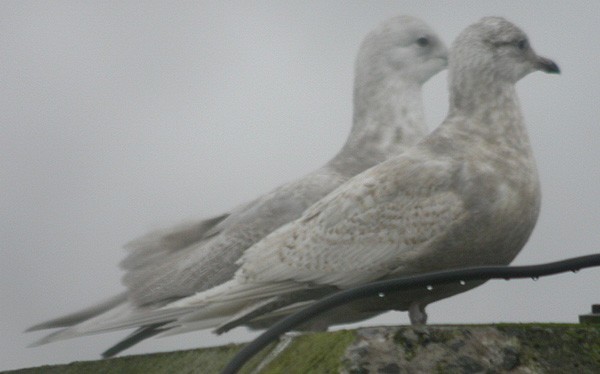
Kumlien's Gull, 2nd winter rear, 1st winter or Iceland Gull in front, Greencastle, Donegal (Photo:
Derek Charles)

Kumlien's Gull, Greencastle, Donegal (Photo:
Derek Charles)

Glaucous Gull, Shoreham-by-Sea, West Sussex (Photo:
Dorian Mason)
Three adult Bonaparte's Gulls were seen over the past week, with one at Ferryden (Angus) on 24th, and again near Peterhead (Aberdeenshire) on 27th. The latter date also saw a Bonaparte's Gull fly past Within (Cornwall). The Franklin's Gull seen recently at Chew Valley Lake appeared again on 29th and 30th, and was thought to be a second-winter bird, rather than an adult, as had been previously thought. At least 65-70 Glaucous Gulls were found this week and they included four juveniles at Duckmanton (Derbyshire) on 24th, and three juveniles on Lewis (Outer Hebrides) also on 24th, with three more (again all juveniles) on South Uist on 27th. A couple of adults made it to the southwest of the country, one at Dawlish Warren NNR (Devon) on 24th-25th, with another on Samson (Scilly) on 25th-26th. For the first time this winter, the number of Iceland Gulls headed past the century mark (and comfortably too), with some 120 birds noted (with over 50 of those in Ireland). That marvellous gulling hotspot Killybegs, up in County Donegal, came up trumps with 16 birds on 27th, including 10 juveniles, with 11 at Nimmo's Pier (Co. Galway) on 25th. In Scotland, eight were at Mallaig (Highland) on 26th-28th and, in England, trios at Grafham Water (Cambridgeshire) on 25th, and Newlyn (Cornwall) on 29th were certainly of note. Up to eight Kumlien's Gull were found this week, with two birds (a juvenile and a third-winter) still at Killybegs on 26th. Also in Donegal, a second-winter was at Greencastle on 28th. A third-winter bird was at Ogston Reservoir (Derbyshire) on 24th, while a juvenile was on Scilly on 26th and 28th. Other juveniles were at Lerwick (Shetland) and again at Mallaig (Highland) and a second-winter was at Ardivachar Point, South Uist (Outer Hebrides) on 28th. Just 20 or so Caspian Gulls were reported, including four birds at London Wetland Centre WWT 27th and a second-winter at Weir Wood Reservoir (East Sussex) on 28th-29th. Familiar Ring-billed Gulls were again seen in Hampshire, Essex, Argyll, County Galway and County Antrim this week. An adult was seen at a couple of spots in London (Rainham Marshes RSPB on 25th and the Isle of Dogs on 27th), while the first-winter bird was again at Helston (Cornwall) 24th. An adult popped into Lakenheath Fen (Suffolk) on 30th, and the final Ring-billed Gull was seen at Ballyvaughan (Co. Clare) on 27th. A juvenile/first-winter American Herring Gull was seen briefly off Sennen Cove (Cornwall) on 24th, while at Nimmo's Pier in Galway, the long-staying adult was joined by a subtle, smoky juvenile on 24th-28th.

Waxwing, Market Rasen, Lincolnshire (Photo:
Russell Hayes)
The Richard's Pipit at Shingle Street (Suffolk) was reported again on 23rd, with a second bird seen at Howden's Pullover (Lincolnshire) on 30th. Around 100 Waxwings were noted this week, with the largest group being some 50 birds at Westhill (Aberdeenshire) on 28th-30th. The only other flock in double figures were the 13 that remained at Longforgan (Perth & Kinross), to 27th at least.
Both Hume's Yellow-browed Warblers residing in west Cornwall were still present throughout the week, the bird in Cot Valley present to 29th at least and the fresh, rather bright bird at Tehidy CP, near Camborne was still present to 29th (and was trapped and ringed there on 28th). Also at Camborne, a bird at Rosewarne on 27th-29th was initially identified as a Yellow-browed Warbler but opinion, for some, had swung towards yet another Hume's by 29th. Elsewhere in Cornwall, a Yellow-browed Warbler was near Mousehole on 28th, and others were at Jarrow (Co. Durham) from 24th-28th and at Chew Valley Lake (Somerset) from 29th-30th. Single Siberian Chiffchaffs remained in Devon, at Broadsands and Dawlish Warren NNR, both to 26th. Another was at Marazion Marsh RSPB (Cornwall) on 24th.

Great Grey Shrike, Roydon Common, Norfolk (Photo:
David Whistlecraft)
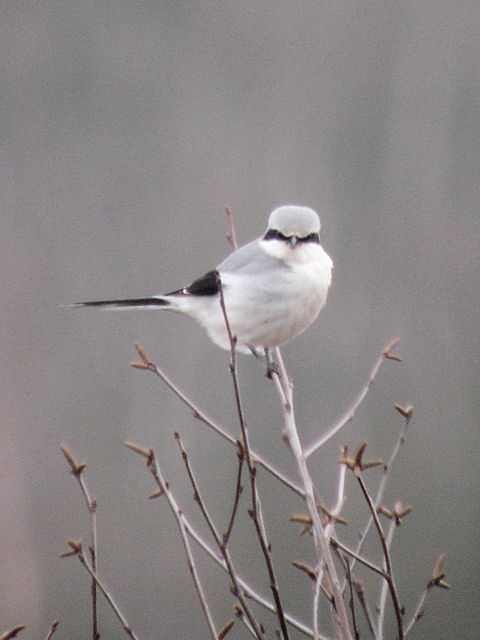
Great Grey Shrike, Roydon Common, Norfolk (Photo:
John Wilcox)
At least 16 Great Grey Shrikes were seen this week, including at least three birds still in Hampshire, along with up to three birds in Norfolk and two in Gloucestershire. A new arrival was at Amberley Wild Brooks SWT (West Sussex) on 27th-29th, while other birds included one still at Llys-y-Fran Reservoir (Pembrokeshire), along with singles on old, traditional stomping grounds in Surrey and Staffordshire.
Photo of the Week
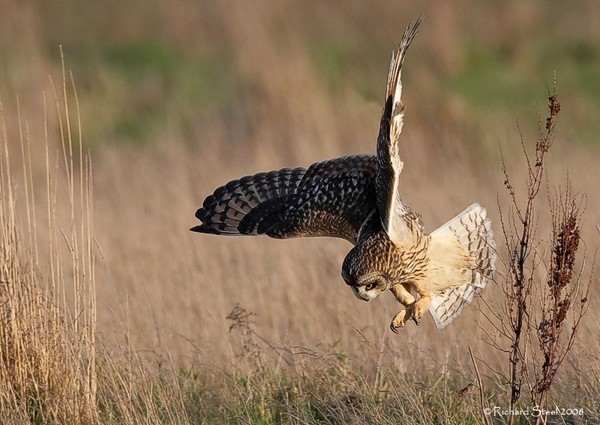
Short-eared Owl, undisclosed site, Conwy (Photo:
Richard Steel)
Watching Short-eared Owls hunting in full sunlight is a special, if slightly incongruous, experience. Richard's flight shot captures the intense concentration and agility of this species in action. In-focus foreground vegetation nicely frames the bird, whilst the background is clear enough to give a sense of place, but soft enough to make the bird stand out. Side lighting emphasises the bird's shape and pose, as well as its facial features. Richard has also made good use of the compositional Rule of Thirds, placing the left wing along a vertical third-line and the head/body at an intersection of vertical and horizontal third-lines. This adds emphasis and balance to the composition.
Other notable photos
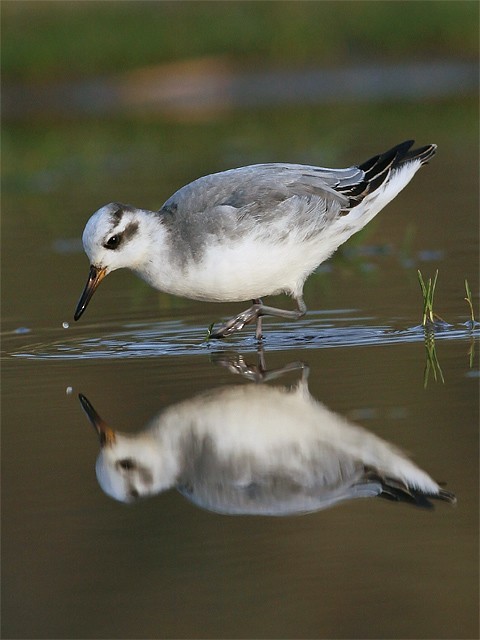
Grey Phalarope, Waxham, Norfolk (Photo:
David H Hatton)
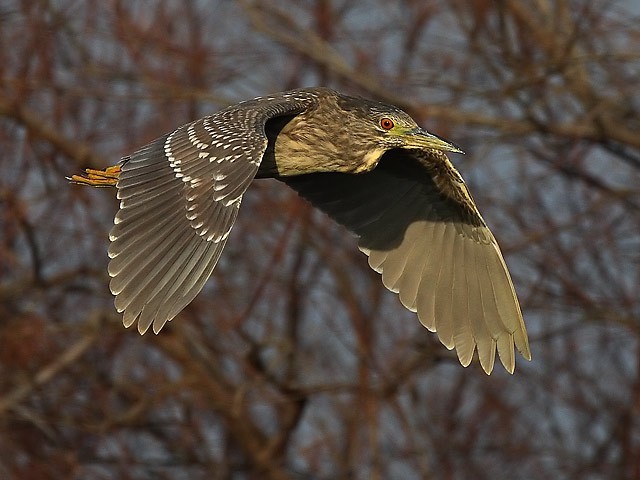
Night Heron, Spain (Photo:
Steve Fletcher)

Grey Heron, Regent's Park, London, Greater (Photo:
Fraser Simpson)

Fulmar, Margate, Kent (Photo:
Steve Ashton)
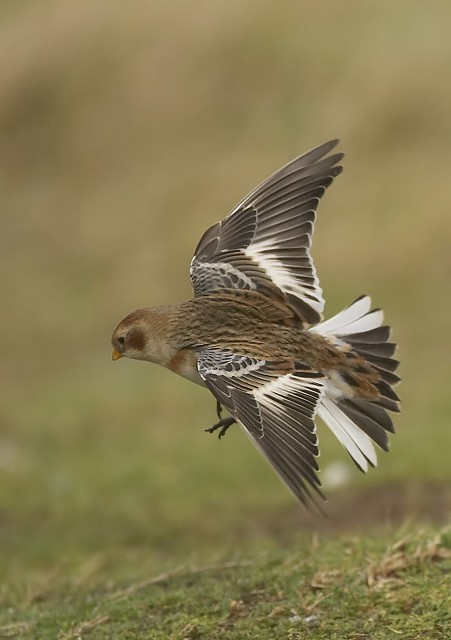
Snow Bunting, Salthouse, Norfolk (Photo:
Richard Bedford)

Black Redstart, Spain (Photo:
Steve Fletcher)
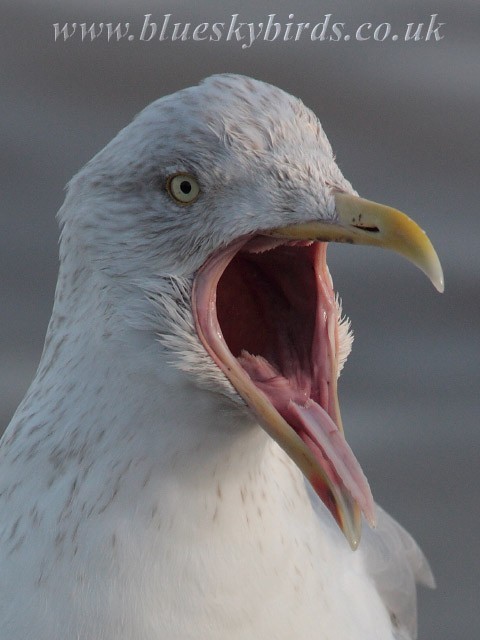
Herring Gull, Wells-next-the-Sea, Norfolk (Photo:
Peter Simpson)

Common Buzzard, Llanddeusant, Carmarthen (Photo:
Richard Crossen)

Grey Heron, Regent's Park, London, Greater (Photo:
Fraser Simpson)

Bittern, Stithians Reservoir, Cornwall (Photo:
Brian Mcgeough)

Lesser Redpoll, Whitacre Heath NR, Warwickshire (Photo:
Paul Goode)

